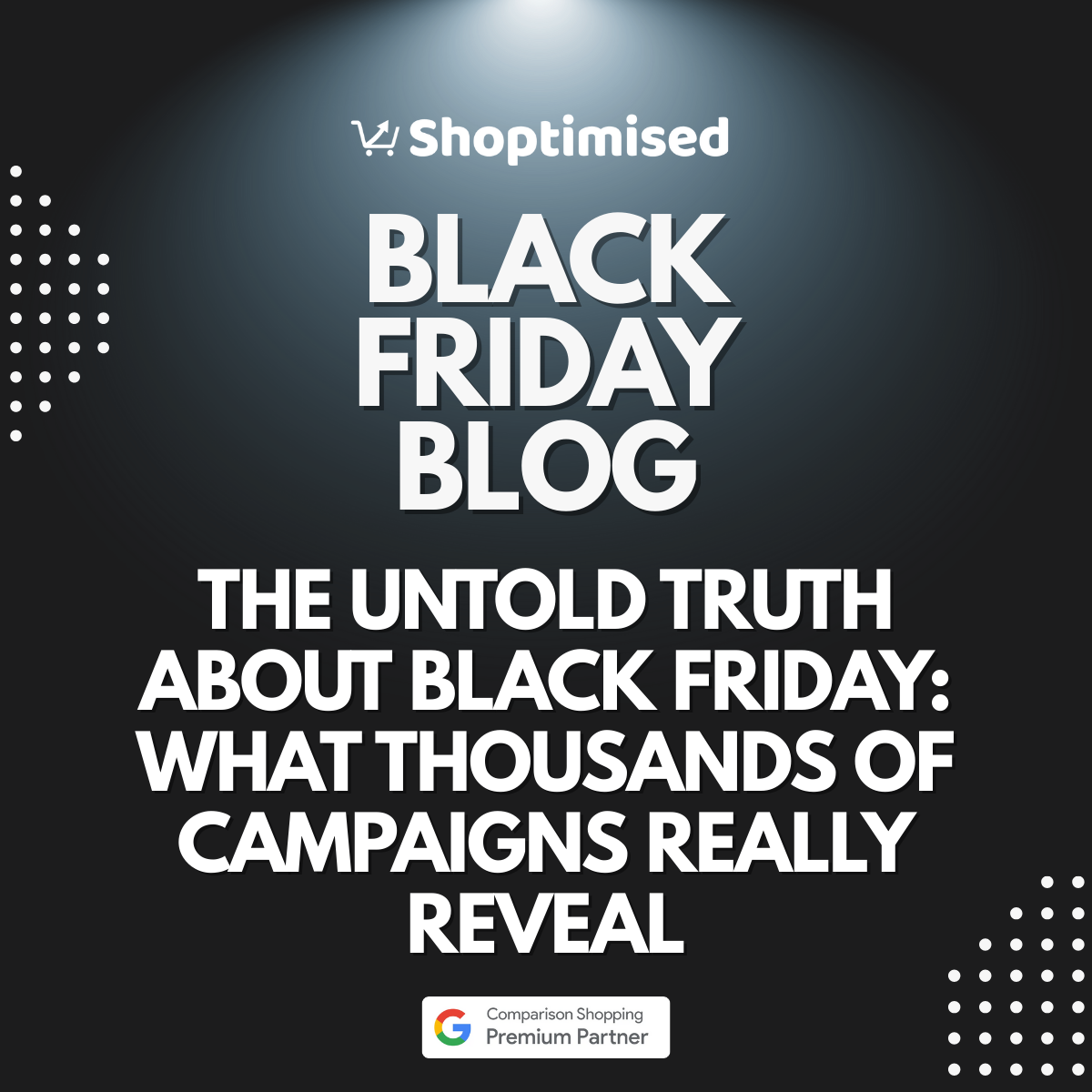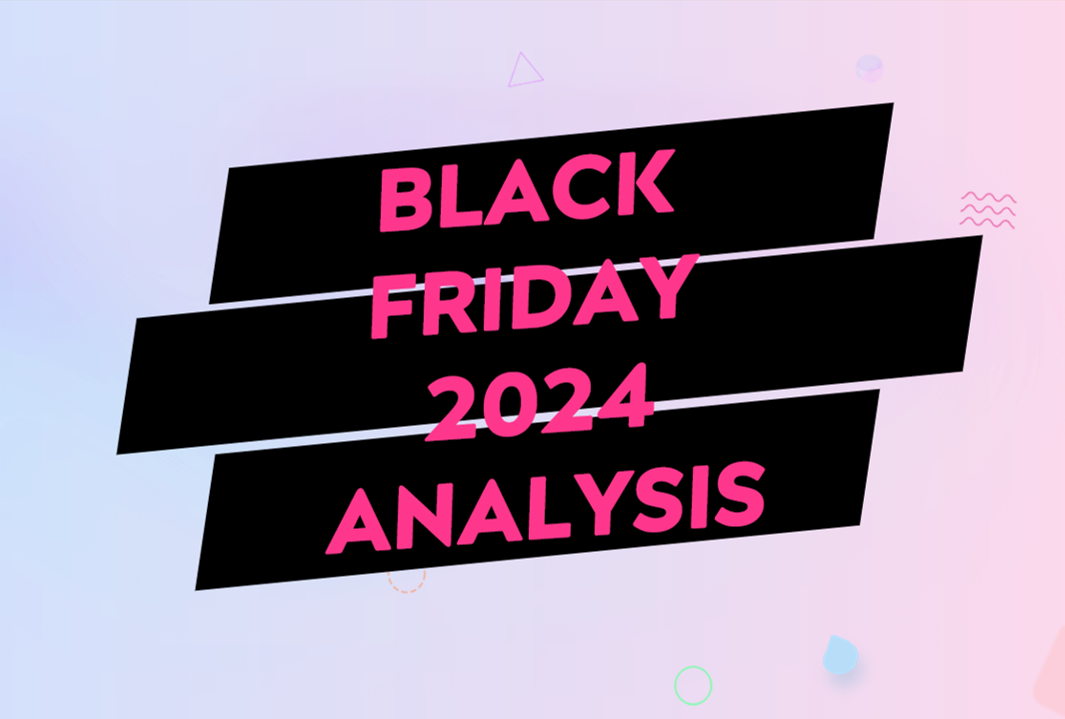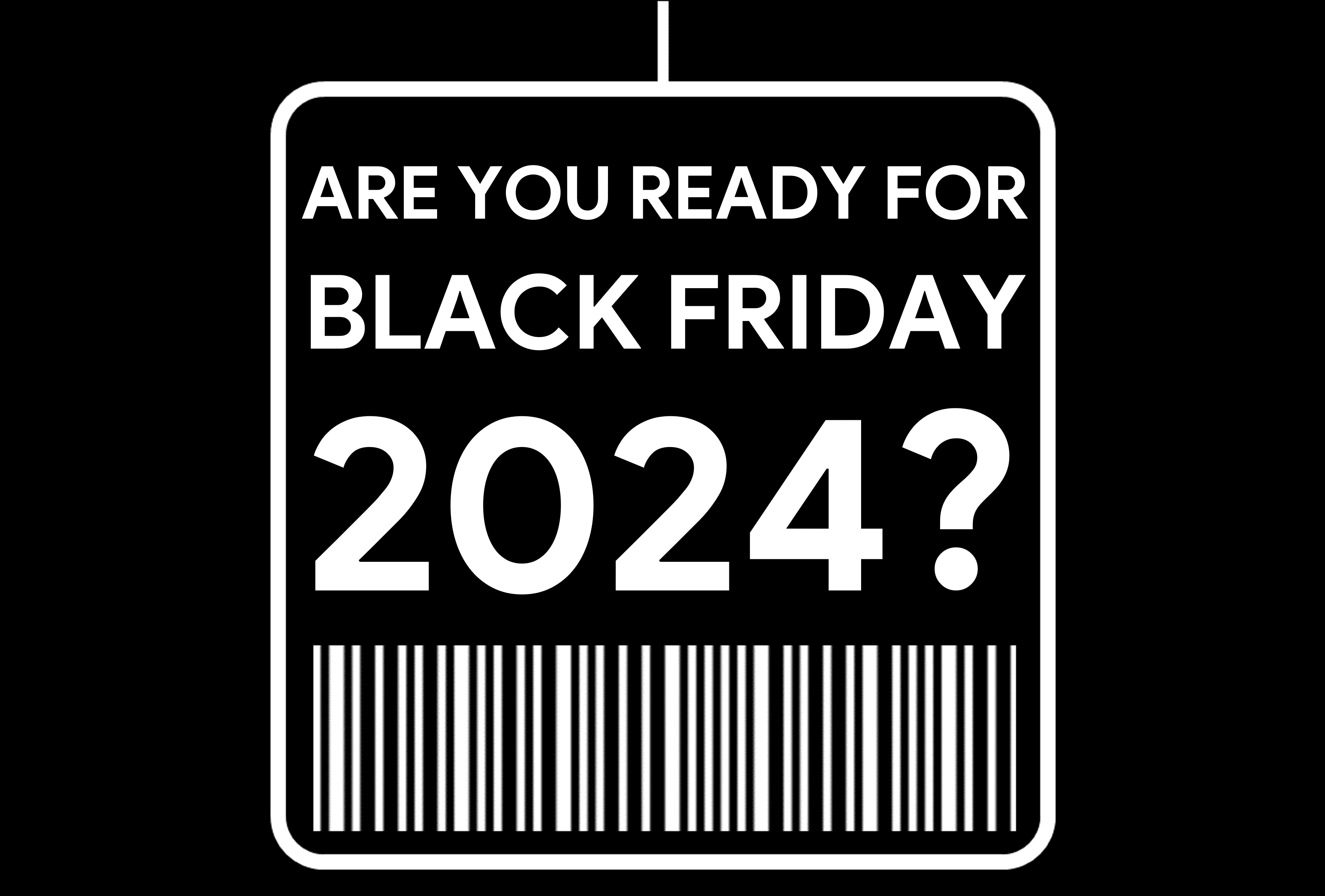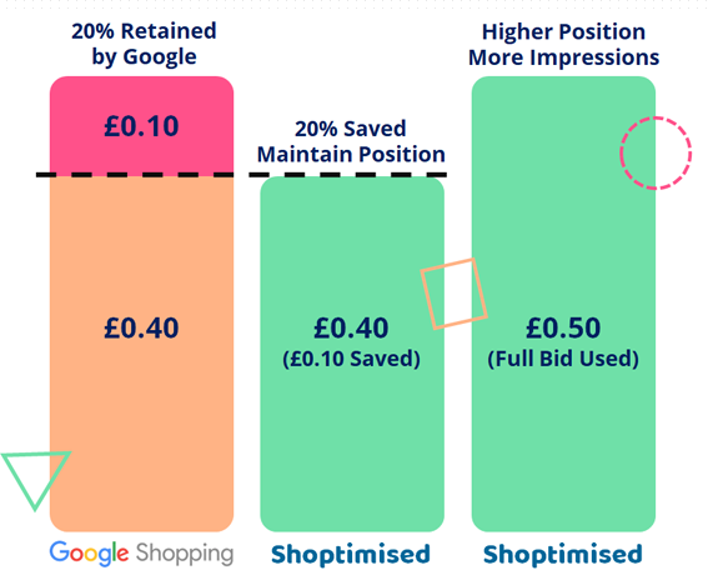
Nov 24, 2025
The Untold Truth About Black Friday: What Thousands of Campaigns Really Reveal
When it comes to managing your Google Shopping budgets in the run-up to Black Friday, the question looms large: should we go early, go all in on Black Friday itself, or reserve more budget for after the promotional period?It's a dilemma that keeps ecommerce managers awake at night. Commit too early and you risk burning through budget before the main event. Wait for Black Friday and you might miss the early bird shoppers. Hold back for Cyber Monday and you could be left picking up scraps.
We analysed data from thousands of Google Shopping campaigns between 19th November and 8th December, breaking it down into six distinct periods. Here's what the numbers tell us – and how you can turn these insights into action for a winning Black Friday strategy.
Here's what most advertisers miss: This period was significantly under-invested last year, despite most Black Friday sales already being live and early shoppers actively hunting for deals. Why does this matter? Because consumer behaviour has shifted dramatically in recent years. Shoppers are savvier, more strategic, and increasingly aware that the ""best"" deals often appear before Black Friday itself. They're doing their research early, comparing prices, and many are ready to buy well ahead of the main event.
The data reveals something striking this window delivered the strongest Return on Ad Spend(ROAS), the lowest Cost per Click (CPC), and the third highest Average Order Value of the entire promotional period. Think about that for a moment: you're getting better returns, paying less per click, and customers are spending nearly as much as they do on Black Friday itself.
Your move: If strong ROAS is your priority, this is where you need to lean in. While competitors sleep on these early days, conserving their budgets for the ""big day,"" you have a golden opportunity to capture high-intent shoppers at a fraction of Friday's costs. Consider this your secret weapon the period where efficiency meets opportunity. Don't just maintain your usual budget during this window actively increase it. Test higher bids, expand your product coverage, and make sure you're visible when these early shoppers are making their purchasing decisions.
Period B – Black Friday
Let's be clear: the sheer volume of demand and revenue available on Black Friday remains unmatched. This is still the Super Bowl of ecommerce, and you absolutely need a healthy budget to cover the full 24-hour period. But here's the catch despite boasting the second highest Average Order Value, ROAS wasn't as strong as the preceding 10 days. Why? The surge in demand drives up competition in Product Listing Ads, which inevitably pushes Cost per Click higher. Every retailer and their dog is fighting for the same eyeballs, and Google's auction system responds accordingly. This doesn't mean Black Friday isn't worth it far from it. The total revenue opportunity is simply too large to ignore. But it does mean you need to be smarter about how you approach it.
Your move: Revenue attribution will be slow on the day itself, so manage your budget hourly. This isn't a ""set it and forget it"" day, you need to be actively monitoring performance throughout. Don't let your budget dry up at 3pm when there's a whole evening of shopping ahead.
Many retailers make the mistake of front-loading their budget, assuming the morning surge is where all the action happens. But shopping patterns on Black Friday are increasingly extending into the evening as people browse on their phones from the sofa after work. Monitor, adjust, and keep feeding the machine throughout the day. Consider setting up automated alerts for when you hit certain budget thresholds, so you can make informed decisions about whether to increase spend or let things coast.
Period C – Saturday
Saturday often becomes the Cinderella of Black Friday weekend and not in a good way. It consistently underperforms, largely because budgets set high for Friday are left unchanged overnight. Here's what happens: retailers set aggressive budgets for Black Friday, the clock strikes midnight, and those budgets roll into Saturday without any adjustment. Meanwhile, consumer behaviour shifts dramatically.
With shoppers hitting the high street the day after Black Friday, online demand naturally dips (unless bad weather keeps people indoors). Physical stores are offering extended sales, the novelty of ""Black Friday"" has worn off slightly, and many
shoppers who were going to buy online have already done so."
Yet Cost per Click remains elevated from Friday's spike, creating a toxic combination that hammers your ROAS. You're paying premium prices for reduced demand – the worst of both worlds.
Your move: Don't sleepwalk through Saturday morning with Friday's budget. Pull back late Friday evening or first thing Saturday. Be ruthless about this – your ROAS will thank you. Set a calendar reminder for 11pm on Friday night, or even better, schedule budget changes in advance if your platform allows it. There's no shame in being conservative on Saturday – you can always increase budgets if you see performance
picking up, but clawing back wasted spend is impossible."
Period D – Sunday
In recent years, Sunday has quietly become a dark horse, often outperforming even Cyber Monday. But there's a wild card in play: the weather.
With Black Friday falling on a payday again this year, mild weather could see shoppers flooding physical stores for extended weekend sales. Town centres and retail parks become destinations, with families making a day of it. When the sun's out, browsers are out. Poor weather? That's when online demand surges. Rainy Sundays create a captive audience of shoppers who were planning to go out but are now scrolling through deals from the comfort of home. This weather dependency makes Sunday one of the most unpredictable days of the promotional period, but also potentially one of the most lucrative if you can read the conditions right.
Your move: Watch the forecast religiously in the days leading up. If rain is predicted across major UK population centres, be ready to capture the spike in online traffic as shoppers stay home and shop from their sofas. If it's going to be sunny and mild, consider pulling back and saving your powder for Cyber Monday instead. The key here is flexibility. Have a plan for both scenarios and be prepared to execute on Saturday evening once the Sunday forecast becomes clearer.
Period E – Cyber Monday
Here's where the desk-bound shoppers take over. Traffic and conversions shift heavily towards desktop as people hunt for deals during work hours. While Cost per Click rises again, Average Order Value climbs too creating a positive impact on ROAS.
Cyber Monday has maintained its relevance precisely because it captures a different type of shopper in a different context. These are people who might have browsed on their phones over the weekend but want the bigger screen and better bandwidth of their office computer to make final decisions. They're comparing specifications, reading reviews in detail, and making considered purchases. There's also a psychological element at play – Cyber Monday feels like the "last chance" for many shoppers, creating urgency that drives conversions.
Your move: Position yourself to capture that crucial 9am to 5pm surge. This is office workers on lunch breaks and "strategic bathroom visits" make sure your campaigns are firing on all cylinders during business hours. Consider dayparting strategies that increase bids during working hours and reduce them outside this window. Your budget will go further, and you'll be matching your ad presence to when your audience is actually shopping. Also, think about your creative messaging and product focus. Desktop shoppers often have different purchase intent than mobile browsers they might be looking at higher-value items or products that require more detailed research.
Period F – The After Party (or The Cool Down)
Don't write off the post-Cyber Monday period just yet. As the frenzy subsides, Cost per Click begins to fall while demand levels stabilize. This drop in CPC positively impacts ROAS, even though Average Order Value typically decreases during this window. What's happening here is that the casual browsers and bargain hunters have made their purchases, but there's still a segment of shoppers who are either procrastinating, waiting for their payday to clear, or genuinely just getting around to their shopping now. The advertising landscape is also less crowded as competitors wind down their Black Friday campaigns and refocus on regular trading or Christmas campaigns.
Your move: This is where smart merchandising makes the difference. Focus on initiatives that drive up basket value – "buy one, get 20% off" promotions or strategic campaigns targeting higher price points can turn this cool-down period into a profitable extension of your Black Friday success. Consider bundle deals, cross-sell opportunities, or "complete the look" style merchandising. Since your Cost per Click is lower, you have more margin to work with – use it to encourage larger basket sizes rather than just chasing volume.
This is also an excellent time to retarget people who browsed during Black Friday but didn't convert. They've had time to think, the pressure of "limited time offers" has passed, and they might be ready to buy if you can give them a gentle nudge with the right offer.
The Bottom Line
Black Friday success isn't just about throwing money at Friday itself. The data shows the winners are those who invest early, manage budgets dynamically throughout the weekend, and stay strategic through the following week.
Think of the Black Friday period not as a single day but as a two-week campaign with distinct phases, each requiring different strategies and budget allocations. The retailers who understand this – who can be aggressive when efficiency is high, cautious when costs spike, and opportunistic when conditions favour online shopping – are the ones who'll come out ahead.
The opportunity is there. The data proves it. The question is: will you seize it, or will you follow the crowd and under-invest in the periods that matter most?
In-House
Monthly Subscription
- 10 User Logins
- 3 Optimised Output Feeds
- Max 100,000 Products per Feed
- Feed Output Channel: All
- Also Includes:
- Product Edits
- Optimisation Rules
- Performance Rules
- Automated Audits
- Auto Suggestions
- Premium Google CSS




